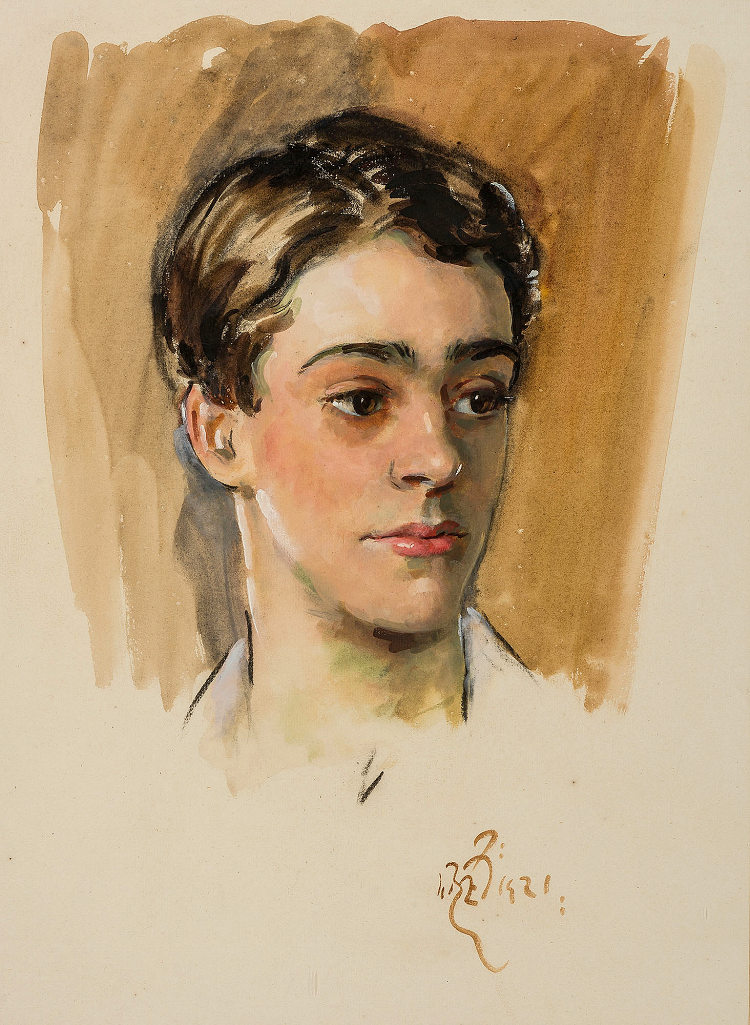 |
| Linley Messel at twenty-two. |
 |
| Oliver Messel at seventeen. |
Oliver Hilary Sambourne Messel (13 January 1904, London - 13 July 1978, Barbados), English artist and one of the foremost stage designers of the Twentieth century.
They were the sons of Lieutenant-Colonel Leonard Charles Rudolph Messel and Maud Frances Sambourne; she was the daughter of Linley Sambourne, the eminent illustrator and contributor to Punch magazine. These 19x14 inch watercolors were two of three by Ranken submitted to the Royal Society of Portrait Artists for exhibition in 1921. A third sketch - its whereabouts now unknown - depicted their sister, the middle child, Anne Messel (8 February 1902, London - 3 July 1992, Nymans). From her first marriage, Anne Messel was the mother of Antony Armstrong-Jones, Lord Snowdon. Ranken appears to have been a favorite of the Messel family, painting not just all three siblings but also their father, as well as a further portrait of Anne after her second marriage to the 6th Earl of Rosse.
William Bruce Ellis Ranken (11 April 1881, Edinburgh - 31 March 1941, London), British artist and Edwardian aesthete. The son of a wealthy lawyer, he was educated at Eton where he studied watercolor painting, and then attended The Slade School of Art in London. With a prodigious output, working in watercolors, oils, and pastels, he received numerous portrait commissions from wealthy Americans, the British royal family and the aristocracy, as well as the interiors of their homes. He died suddenly of a cerebral hemorrhage at the age of fifty-nine and was buried near his beloved Warbrook House in Hampshire, the home he had owned for fifteen years but had had to sell during the Depression.
They were the sons of Lieutenant-Colonel Leonard Charles Rudolph Messel and Maud Frances Sambourne; she was the daughter of Linley Sambourne, the eminent illustrator and contributor to Punch magazine. These 19x14 inch watercolors were two of three by Ranken submitted to the Royal Society of Portrait Artists for exhibition in 1921. A third sketch - its whereabouts now unknown - depicted their sister, the middle child, Anne Messel (8 February 1902, London - 3 July 1992, Nymans). From her first marriage, Anne Messel was the mother of Antony Armstrong-Jones, Lord Snowdon. Ranken appears to have been a favorite of the Messel family, painting not just all three siblings but also their father, as well as a further portrait of Anne after her second marriage to the 6th Earl of Rosse.
*
 |
| The artist, himself, photographed by Baron de Meyer, 1907. |

















































%20Monika%20Pon-su-san%20by%20Vladimir%20Tretchikoff,%201952.png)
















